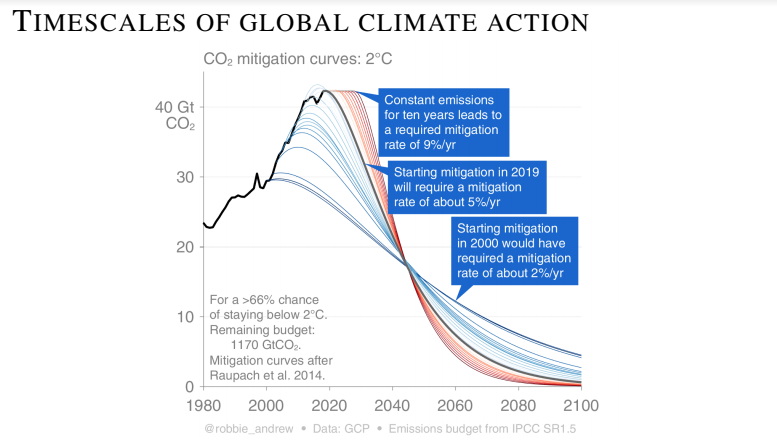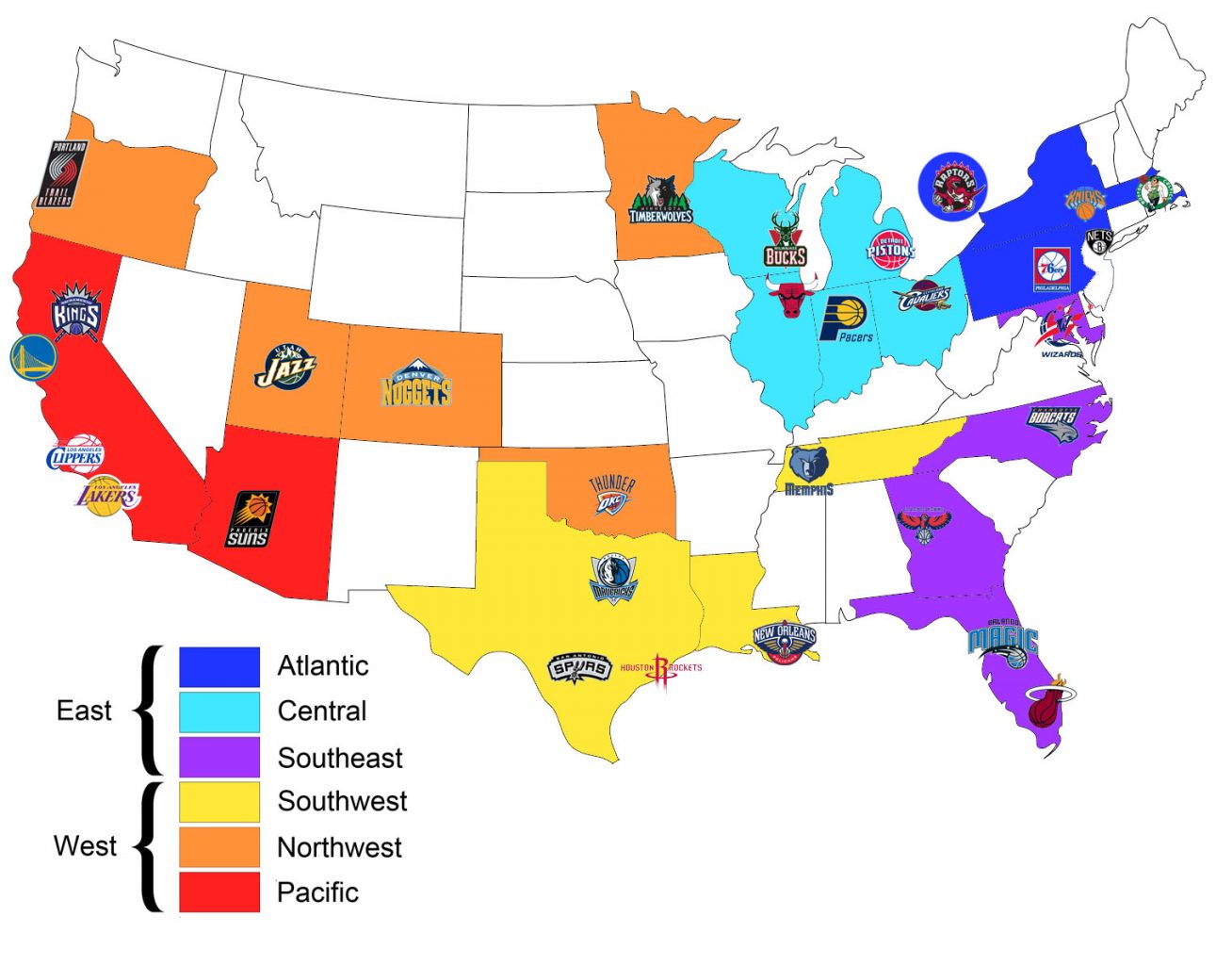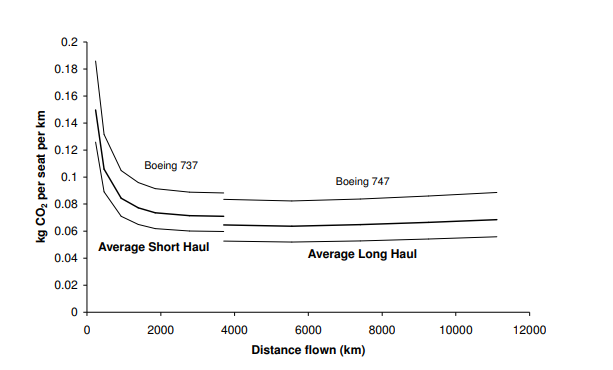This is the first in a series of investigations into the climate costs of sports and how to make sports leagues environmentally friendlier.
With the National Basketball Association (NBA) being an industry leader in addressing social issues and taking social action, it’s beyond time for Commissioner Adam Silver to lead a fast break to make sports leagues environmentally friendlier.
It’s no secret that we are in the midst of a climate crisis. We haven’t just underestimated how fast our global temperatures will rise above the 1.5-degree Celsius global climate target and how much that will affect global geography let alone the economy. We’ve vastly underestimated how fast our oceans are warming too. Roughly 93 percent of the warming effects of greenhouse gases are absorbed by our oceans, which have risen in average sea level by eight inches. America is second to only China in environmental consumption, and China is now doing more than America to curb its environmental impact.


The scientific consensus is that eliminating carbon dioxide (CO2) emissions is the solution, which requires the elimination of the fossil fuel industry. A 15-year-old, Swedish climate activist named Greta Thunberg said as much in her speech at the United Nations’ 24th Annual Conference of the Parties on Climate Change (COP24) in Katowice, Poland.
“Our civilization is being sacrificed for the opportunity of a very small number of people to continue making enormous amounts of money…It is the sufferings of the many that pay for the luxuries of the few.”
For 24 years the conference has been held, and for 24 years it’s been sponsored by the fossil fuel industry. “Partners” in 2018 included PGNiG, a Polish state-controlled oil and gas company, Erlin, a major Polish oil refiner and petrol retailer, and PKEE, the Polish Electricity Association, which provides 80 percent of Poland’s electricity and almost half the country’s energy by burning coal. So the “parties” involved in the U.N. Conference of Parties on Climate Change aren’t exactly interested in pursuing the ambitious action required to preserve the planet and its inhabitants. They’re simply trying to preserve their profits at the expense of Earth’s inhabitants.
The NBA might not be one of the grossest corporate contributors to climate change like the 100 fossil fuel production companies responsible for 52 percent of global, industrial greenhouse gas emissions since the industrial revolution. The NBA’s not in that league, but it is a considerable contributor to the climate crisis with ample opportunities to curb its carbon dioxide emissions.
The NBA’s Carbon Footprint
Like the league’s players, the NBA’s carbon footprint would fill very large shoes. And while air travel only accounts for about two percent of global greenhouse gas emissions now, aviation emissions have and will continue to increase until we discover a way to make planes as environmentally friendly as electric cars powered by renewable energy resources. Passenger vehicle emissions are declining despite increasing travel thanks to more fuel efficient vehicles on the roads, contributing to three consecutive years of declining CO2 emissions in America before Barack Obama’s emissions regulations were repealed by Donald Trump.
Those repeals and a three-percent increase in demand for diesel and jet fuel contributed to the 3.4-percent annual increase in U.S. emissions in 2018—the second largest annual increase in more than two decades. And aviation emissions are expected to increase exponentially.
According to the International Civil Aviation Organization, by 2020 global international aviation emissions are projected to be 70 percent higher than in 2005. In 2050, they are expected to be more than 700 percent higher. This is obviously unsustainable and must be addressed as soon as possible in order to allow for development of technology that will do for airplanes what lithium-ion batteries did for cars. Until then, all anyone can do, including the NBA, is fly less.
NBA teams will travel more than 1.3 million air miles in the 2018-19 regular season. That’s down from almost 1.4 million last year, but the result is still around 31,842 metric tons of carbon dioxide emitted into our atmosphere.
A metric ton is best described as a balloon with one end lined up on the goal line of a football field and the other on the 10-yard line. That balloon filled with carbon dioxide would weigh approximately one ton. The average American family emits 24 of those balloons per year. Those balloons are roughly the size of a single-family home.


CO2 Contraction by Expansion
The biggest environmental problem currently facing the NBA is that there are too few teams in the western Americas. I used the Carbon Footprint Calculator to determine the environmental impact measured in metric tons of carbon dioxide emissions per passenger for each one-way, first-class trip of every NBA team.
I did not account for the increased effect of planes emitting greenhouse gases at high altitude, called radiative forcing, which would increase emissions by a factor of 1.891, because the data set is not meant to be an accurate representation of the NBA’s CO2 emissions. Its only function is to estimate a percentage difference in emissions between the NBA as it exists now, and the NBA as it should be. It does that effectively because the means of estimating those emissions is consistent throughout the data set.
Like climate science, my research was a lot of work to prove what’s pretty obvious. The carbon footprint of the West Coast teams in Los Angeles, Portland, and soon, San Francisco, are unnecessarily high due to a lack of nearby teams for them to play.
Upon moving to San Francisco, the Golden State Warriors will have 11 one-way trips emitting more than one metric ton of carbon dioxide per passenger. The Lakers and Clippers are faced with nine one-way trips emitting more than a metric ton of carbon dioxide per passenger each. Portland and Sacramento also have nine trips resulting in more than a metric ton of carbon emissions per passenger one way. Compare that to the East Coast teams in New York, Brooklyn, and Boston, which have just six such trips. Even Orlando, Miami, Philadelphia, and Washington D.C. have just five one-way trips emitting at least a metric ton of carbon dioxide per passenger.
Add Teams in Seattle and Vegas
The NBA can address its biggest environmental issue by adding expansion teams in Seattle and Las Vegas, or Vancouver (or Mexico City, someday). Seattle is the most obvious choice for NBA expansion given the Key Arena renovation, and given the infrastructure and interest in Vegas and Vancouver, either could comfortably sustain an NBA franchise.
Vegas is more likely to get an NBA expansion team first simply due to the stigma of sports betting being vanquished by the U.S. Supreme Court and allowed wherever voters want it. More importantly though, the addition of two expansion teams to the Western Conference allows the NBA to move a competitive team into the Eastern Conference to make the conferences more even when it comes to overall competitiveness. That move will also result in a smaller carbon footprint for the NBA. So who’s the newest member of the Eastern Conference?
Move Minnesota to the Eastern Conference
This isn’t just another homer calling for Minnesota to be moved into the Eastern Conference for biased reasons, but for obvious ones. No team traveled farther than the Timberwolves in 2017-18, so it should surprise no one that they went 17-24 in road games despite going 30-11 at Target Center. Only Portland, Golden State, and each of the Los Angeles teams will travel farther than Minnesota this season, and only Golden State has a winning record on the road as of this writing.
The Timberwolves simply belong in the East given their location. Only Portland (.54 metric tons of CO2 emissions per passenger per one-way trip on average) emits more carbon dioxide to play its own division foes than Minnesota (.45 metric tons of CO2 emissions per passenger per one-way trip on average). If the numbers aren’t convincing enough, take a look at a map.


As the conferences are currently constructed, the Timberwolves are closer to teams in the East (.4 metric tons of CO2 emissions per passenger per one-way trip on average) than they are to the teams in the West (.54 metric tons of CO2 emissions per passenger per one-way trip on average). If two expansion teams were added to the Western Conference to lower the carbon footprint of the Trail Blazers, Warriors, Lakers, and Clippers, the Timberwolves are the obvious choice to move into the Eastern Conference. But what does that do to NBA division alignment?
Pacific Division: Las Vegas, Golden State, Los Angeles Lakers, Los Angeles Clippers, Phoenix Suns
Northwest Division: Seattle, Portland, Utah, Denver, Sacramento, Oklahoma City
Southwest: San Antonio, Dallas, Houston, New Orleans, Memphis
Southeast: Miami, Orlando, Charlotte, Washington D.C., Atlanta
Central: Minnesota, Milwaukee, Chicago, Indiana, Detroit, Cleveland
Atlantic: Toronto, Philadelphia, New York, Brooklyn, Boston
But adding two expansion teams in the West and moving the Timberwolves into the Central Division and the Thunder into the Northwest Division isn’t all the NBA must do to curb its carbon footprint.
Play More Division Games…but Not Too Many
This might seem like a no-brainer, but Oxford’s big brain Dr. Christian N. Jardine explains why taking short flights can actually result in higher greenhouse gas emissions per passenger than medium or long flights. Planes use so much fuel to get off the ground that short flights don’t travel far enough to spread the immense fuel burn necessary for takeoff to lower the average emissions per air mile or kilometer per passenger, or, more accurately, per seat, even empty. So short flights can end up emitting as much or more carbon dioxide per seat per air mile or kilometer than medium or long flights.


Once a plane is at its cruising altitude there’s less jet fuel required to keep it in the air, so emissions fall dramatically over the first thousand kilometers (621 miles) before leveling off and inching upward upon traveling about 2,000 kilometers (1,243 miles). So while you might think having Oklahoma City in the Northwest Division is asinine, the Thunder and their new division opponents could actually fly to each other’s arenas more efficiently than OKC’s current, shorter flights.
The flight from Oklahoma City to Seattle is only 451 kilometers (280 miles) beyond the leveling off point. Portland is just 390 kilometers (242 miles) beyond the aviation emissions happy place. Flying to Sacramento is even more efficient—just 151 kilometers (94 miles) beyond the aviation emissions immaculate integer. And Salt Lake City is a most efficient flight for the Thunder, landing 613 kilometers (381 miles) before emissions get a chance to inch upward. Denver doesn’t allow for emissions to level off, resulting in higher emissions despite being the shortest flight at 811 kilometers (504 miles). Only New Orleans is an efficient flight for the Thunder in their current division (926 km/576 mi), but that’s mostly the case in all the divisions, which is why scheduling too many division games can be just as detrimental to the environment as scheduling too many non-conference games.
Even if the NBA insists every team play every other team at least twice, there’s still 50 games left in the season for teams to play in their own conference after the expansion to Seattle and Vegas. Currently, teams play 16 games against their own division and 18 games against each of the other divisions in their conference.
Assuming one division in each conference will consist of six teams while the other two are made of five, playing 20 division games makes sense. Teams in the divisions of five could play each division opponent four times, with tiebreakers for playoff seeding being point differential—or, better yet, one-game playoffs—with point differential determining who gets home court in the game.
That leaves 30 conference games left to be played: two against each conference opponent. But we still haven’t made the NBA as environmentally friendly as possible. Doing so would require NBA teams to utilize ground transportation more often.
Fly Less
Chartering private planes makes for quick, relatively comfortable flights for NBA players and coaches, but with green, ground transportation becoming more available, the NBA should use it more often. Vehicles running on renewable resources aren’t as comfortable as private jets, but they don’t contribute to the climate crisis, unless, of course, the place from which you’re getting your energy gets it from fossil-fueled plants, which is also the case less and less often.
Electric limousines or party buses could be fun for players and coaches on an off day between games in Orlando and Miami. The Bucks’ chartered bus could lead a caravan of fans from Milwaukee to Chicago, and vice versa, like a high school basketball rivalry. Teams could buy out entire cars of a train during off peak hours to get from New York City to Philadelphia in less than two hours, and vice versa. Another train could take teams from Philadelphia to Washington D.C. in two hours. Teams traveling between Los Angeles and San Francisco could charter a sailing yacht or two for trips between Los Angeles and San Francisco. Players who get seasick could take a smaller jet that’s more efficient.
There are plenty of alternatives to flight if players are willing to sacrifice some of their time to cut greenhouse gas emissions. The NBA could also accommodate players for doing so by never scheduling back-to-back games ever again.
Play Two-Game Series Instead of Back-to-Backs
Players and fans alike both hate back-to-backs. Players hate playing in back-to-back games and stars seldom do, which doesn’t give fans full value for their money. But back-to-backs are environmentally friendly. They’re generally played to allow for easier scheduling and shorter flights during road trips. Two-game series would be environmentally friendlier, easier on the players, and better for the fans, who will enjoy better basketball as a result.
This is where the biggest cuts in CO2 emissions can be made. Instead of making twice as many flights to play the same number of games, division rivals can fly into town, play a game, enjoy an off day, and play another game before boarding another flight. If this was done throughout the league, the NBA’s collective carbon footprint resulting from the divisional schedule could be cut in half.
So instead of the Kings traveling to Oklahoma City and the Thunder going to Sacramento five separate times, they make the trip two or three times, depending on how the rest of their road trips are scheduled. In the case of our new six-team Central and Northwest divisions, teams would only have to make one trip to each division opponent instead of two. Some fans might be more likely to miss games division games they want to see if they happen to be out of town, but sacrifices must be made by all.
The same could be done for non-division, conference games and is already done for non-conference games in places where multiple NBA teams reside in close proximity and where ground transportation would suffice. So instead of the Raptors making two separate trips to Miami and Orlando, they make just one trip playing a game in both cities with an off day in between—flying into one city, taking ground transport to the other during non-peak hours, and flying out of that city after the game.
Teams traveling to Los Angeles could play the Lakers and Clippers over a three-day stretch. Visits to Texas could have three games played over five days, and teams visiting New York could play the Nets and Knicks over three days. Road trips would be longer, but baseball players spend weeks away from home, and I imagine basketball players would prefer longer road trips, and even a longer regular season schedule, to playing back-to-backs.
If every team flies half as much to complete almost a quarter of its schedule, that cuts carbon emissions enough to not only accommodate the addition of two expansion teams but still lower the NBA’s collective carbon footprint—by six percent according to my figures. It does make for a longer regular season, however. Solution:
Make the First Round of the Playoffs a Five-Game Series
My biggest problem with the NBA is the length of the postseason. It’s the most predictable sport among the Big 4. The better team is more likely to win a basketball game than a hockey, baseball, or football game. So why do we need a seven-game series to determine who moves onto the second round of the playoffs?
The NBA must sacrifice a few playoff games that won’t necessarily occur in order to allow for environmentally friendlier action to be taken with the regular season schedule…not to mention player friendly action. I know I’d rather see one-game playoffs between tied teams battling for final playoff spots than a game seven in the first round of the playoffs. I’d also like to see stars play every game rather than sit out the first or second game of a back-to-back.
Stop Drinking Bottled Water and Gatorade
No sport is worse than the NBA when it comes to creating plastic waste. The Gatorade coolers, Gatorade squeeze bottles, and paper cups are gone. Instead, just about every member of every team, including staff, has both bottled water and a bottle of Gatorade near them. This must stop, and players with Gatorade endorsement deals should be leading the charge by refusing to create plastic trash that flows through our rivers and into our oceans to form islands of plastic that’ll outlast the island nations threatened by the rising sea levels resulting from man-made climate change.
The people displaced from their homes by the climate crisis can’t populate floating islands of trash, and sea life won’t survive long in a plastic habitat. Even if we get that plastic trash out of the oceans, what are we to do with it? Some of it might be able to be repurposed to construct shacks and modest domiciles, but like CO2 emissions, plastic isn’t going anywhere anytime soon unless we make it go away by refusing to buy it. People do it and much more.
The NBA isn’t going anywhere anytime soon either, and it’s going to expand because that’s what’s necessary for continued growth as a business. But those of us who have to live on this rock shouldn’t suffer from the pounding of the rock.
It’s well past time for the biggest contributors to the climate crisis to pay for damage already done and yet to be done. This is how small steps become giant leaps, but we can’t afford to stand still anymore. We need to be moving as fast as most NBA teams bringing the ball up the court these days. With the NBA being the perceived leader in sports when it comes to socioeconomic involvement, Commissioner Silver should act on these recommendations as soon as possible.
Next up in this series we’ll try to make the National Football League (NFL) as environmentally friendly as possible.













